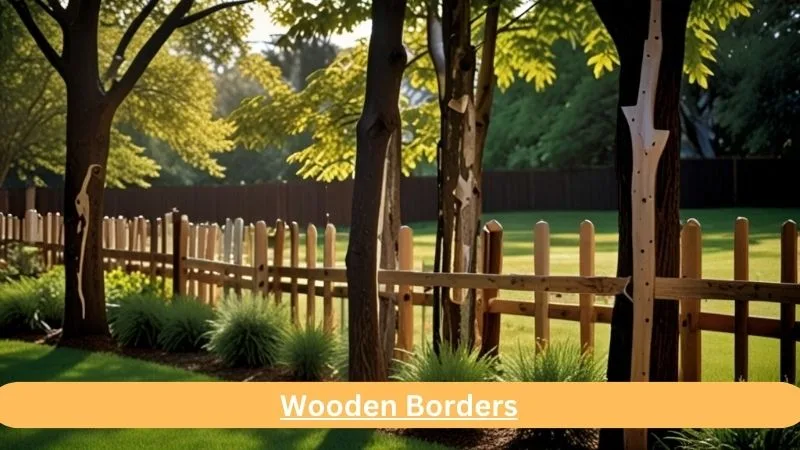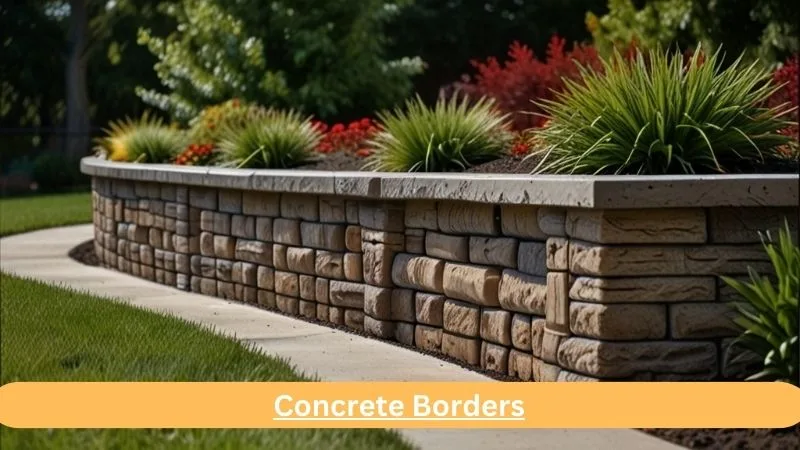Simple Landscape Border Design Ideas
Introduction
Creating your garden border can transform your outdoor space into an extraordinary space. Borders help define an area and add structure and cohesion. The right edging design can enhance the overall beauty of your garden and help plants grow, keep paths clear, and keep weeds out of flowerbeds. With so many materials and styles to choose from, creating the perfect border for your landscape can be a fun and rewarding experience. Here are detailed ideas to support your landscape border design:
Natural Stone Edging
Natural stone edge adds rustic and timeless appeal. Use regular stones for a more organic look and cut stones for a better look. Rocks come in many colors and textures and can be customized to match the beauty of your garden. They are stable and adapt to their environment, making them a good choice for long borders.
Brick Borders
Brick Border offers a classic and beautiful design to the garden. They can be placed in patterns such as herringbone, square basket, or continuous weave, providing a simple design. The bricks are strong and weather-resistant, and their warm tones add a warm appeal to the garden. It can also be replaced if damaged, making it a good choice.
Also Read Construction Loans Financing Your Project
Wooden Borders

Border trees bring the sky and warmth to the garden. Use engineered wood, cedar, or redwood to ensure longevity and prevent rot. Logs or crossbars can add a rustic feel. For a more modern look, consider using smooth-painted wood. Frequent upkeep, such as painting or sealing, can be beneficial to extend its life and appearance.
Metal Edging
Metal edging gives a stylish and modern look to garden borders. Materials such as steel, aluminum, and weather-resistant steel are popular choices. Thin but sturdy metal edges provide a clean separation between lawns and garden beds without looking obtrusive. They are instrumental in modern architecture and can be made into curves or corners to suit any configuration.
Paver Stone Borders
Pavers are versatile and available in many shapes, sizes, and colors. They may be intended to create formal and informal boundary patterns. Pavers are resilient to severe traffic and long-lasting, which makes them ideal for paths and garden borders. Their uniformity gives a neat appearance and improves the overall layout of the garden.
Concrete Borders

Concrete Border is a durable and adjustable choice for garden edges. They can be cast in any shape or size, allowing creative design. Stamping or staining the stone can add texture and color, making it look like stone or brick. Stone is durable, requires little maintenance, and is ideal for creating clear, solid boundaries.
Plant Borders
Using plants as borders creates a robust and seasonal shift in its dynamic edge. Rare plants, perennials, or ornamental grasses can define a garden area while adding color and texture. While hedges provide the best design, flowering plants also add beauty to the country. Plant borders require regular maintenance, such as pruning and watering, but can add a lush and vibrant appearance to your landscape.
Recycled Material Edging
Its eco-friendly and unique recycling collection includes glass bottles, old bricks, and recycled wood. This method reduces waste and adds a personal touch to the garden. Glass bottles can be buried lengthwise to create a colorful border, and old stones and tiles can be arranged in patterns. The possibilities are endless, and it is an unforgettable environment.
Gabion Walls
Gabion walls are metal boxes filled with stone or other materials that provide good structural properties. They are perfect for working and decorating borders. Gabion walls can create raised beds, retaining walls, or simple curbs. They provide good, stable water and look very similar to tender plants.
Terracotta Edging
Terracotta tiles or pipes for heating ground borders that complement many types of gardens. Their reddish-brown color adds a Mediterranean touch and is perfect for a herb garden or a sun-drenched flower bed. Terracotta is also durable and will weather well over time, adding character to the garden. Ensure proper development to prevent changes and maintain quality.
Gravel and Pebble Borders

Pebbles and gravel offer a simple and uncommon option for garden borders. They are perfect for a modern or Zen garden design. Use rocks or pebbles in different sizes and colors to create visual interest. They are great for flowing water and can be mixed with additional materials, such as wood or stone, to make a layered effect. Rake regularly to help them stay in place and look fresh.
Plastic or Rubber Edging
Plastic or rubber edging is an inexpensive and easy-to-install option. This information is flexible and can be bent to fit any garden beauty. They come in many styles, from simple stripes to more beautiful designs resembling stone or wood. Usually made from recycled tires, rubber edging is exceptionally environmentally friendly and durable and is resistant to damage from weather and garden tools.
Conclusion
Choosing the proper edging for your landscape can improve the performance and look of your home landscape. Whether you enjoy the beauty of brick, the modern lines of metal, or the natural appeal of plants and rocks, edgings are designed to suit every taste and garden style. By combining these simple edging design ideas, you can create a harmonious, visually appealing outdoor space that matches the overall design and expresses your own taste style of your garden. With some creativity and planning, your garden edging may be a beautiful complement to your landscape.
Simple Landscape Border Design Ideas – FAQs
Q1. What is the purpose of landscaping?
Ans: Landscape plays a vital role in today’s world. We use landscaping for our home, workplace, and beauty. We use it to create freedom and comfort. It accomplishes environmental protection as well.
Q2 .What defines a border landscape?
Ans: Borders differ from beds in borders and have vertical elements such as walls, fences, or hedges that define one or more sides of the boundary, forming the back, front, and side of the garden. These details are essential when searching for designs that meet your needs, whether from books or online.
Q3 .Which type of landscape edging is best?
Ans: Metal landscape edging is generally the first choice in modern landscaping. It is made of various materials and is durable and long-lasting. Metal edges are also low maintenance and require little maintenance to prevent repairs.




Leave a Reply